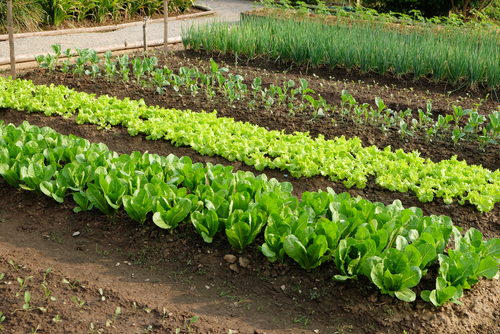The sun is shining, the weather is sultry, and the plants have hit their growing stride. Summer is a time full of activity and excitement for gardeners of all types.

But summer is also a time of challenges around the lawn and garden. These challenges can quickly overwhelm and discourage even the most seasoned veteran. Green thumbs and do-it-yourselfers have to worry about too much sun, too much water, too little sun or water, insects, and vermin of all kinds that threaten to turn an otherwise joyous growing season into a constant battle.
Perhaps the most voracious of difficulties faced by the gardener (at least this one) this time of year are weeds. Sure, they start to pop up in mid-spring but, like many plants; they really hit their stride come early summer. And boy can they be a headache. For me, crabgrass has been a nightmare and my wife, and I have devoted many hours pulling and cultivating this resilient little pest.
This, of course, has caused me to re-examine my plan of attack. The brute force method just really isn’t cutting it for me. While there isn’t much that I can do this year, short of a slash-and-burn chemical attack (which is totally out of the question), there are several strategies that we gardeners can use to make our lives much easier during the growing season in regard to weed control.
The first is to investigate a simple configuration change in the way we plant our gardens. Many gardeners still use the tried and true “row” method, and it surely won’t steer you wrong. It’s easy to get proper plant spacing and it’s easy to maneuver between rows for weeding and harvesting. However, all that bare dirt between rows can be ground zero in the war against weeds. Nice, wide rows can make it easier to cultivate weeds using a hoe or other garden tool, but it would be so much nicer to prevent them in the first place.
Switching to a “bed” configuration can help control weeds by choking them of light. The idea is simple really. If a plant can sustain 4” spacing within the row, then it will surely be fine with the same spacing between rows as well. The tighter living quarters will shade the ground below and prevent the growth of weeds. A drawback to this is that, especially early in the season and especially if you start from seed, the weeds are on the same growth scale as your plants and will grow at the same rate. This makes distinguishing between good and bad plants difficult, and the close spacing makes it difficult to target the bad.
There are also certain plants, like zucchinni, squash, beans, peas, cucumbers, corn, and even tomatoes that compete very well with weeds and get tall and/or bushy enough to starve them out. Consider all of this in your garden architecture.
Of course, changes like this only go so far. To really do some damage you will need to take further action. We all know that cultivation is probably the most common method of defense. The common hoe and tools like it are the preferred weapons, but there are even more proactive steps to be taken.
Ground cover is a common way to suppress weeds. Mulch is a common organic ground cover, and many gardeners use wood chips or sawdust between rows to suppress weeds. This has the added benefit of retaining moisture to help your plants through those dry summer spells. If you are using sawdust, make sure it has been properly aged so that there is no remaining acidity. At least a year is preferred.
Many gardeners will even catch their lawn clippings and leaves for use as mulch. You should be aware that you may be seeding weeds into your garden by using this method, but it is a cheap and easy mulch material.
Both these organic ground covers also have the advantage of being able to be tilled directly back into the garden, although you should of course steer clear of wood chips that are too large to breakdown over the fall and winter.
Organic mulches aren’t the only ground cover options though. Plenty of people also use ground cover fabrics to suppress weeds. These are simple to lie down between rows. You can even lay it over the whole garden and cut the cloth only where you want your plants to live. Since you’ll have to remove the cloth at the end of the season, make sure you get a durable one that can take the abuse. Some of the less expensive ones may come apart under this type of strain and allow weeds to spring up.
Also keep in mind that most of this cloth is going to be black and may transfer captured heat to the soil around your plants. Too much of this heat can damage the root systems of your plants. At the same time though, early in the season they can warm the ground to help with germination and root setting. Depending on your location, you may have to alter your usage of ground cover.
The last line of defense is chemical warfare. I will only touch briefly upon it since most gardeners are probably going to want to avoid the use of chemicals in their vegetable or flower garden. But use of chemicals may be necessary for especially stubborn pests like ill placed Morning Glory or Blackberries. Cultivation can be ineffective because the root system of viney plants like these is extraordinarily stubborn, with any piece of the root system being able to spawn new plants. Short of complete root system removal, chemicals may be the only option.
Drew Landis is Social Networking Coordinator for an online greenhouse retailer.
Related Articles & Free Email Newsletter
7 Reasons for Companion Planting
Soil Amendments in a Changing World




Comment here